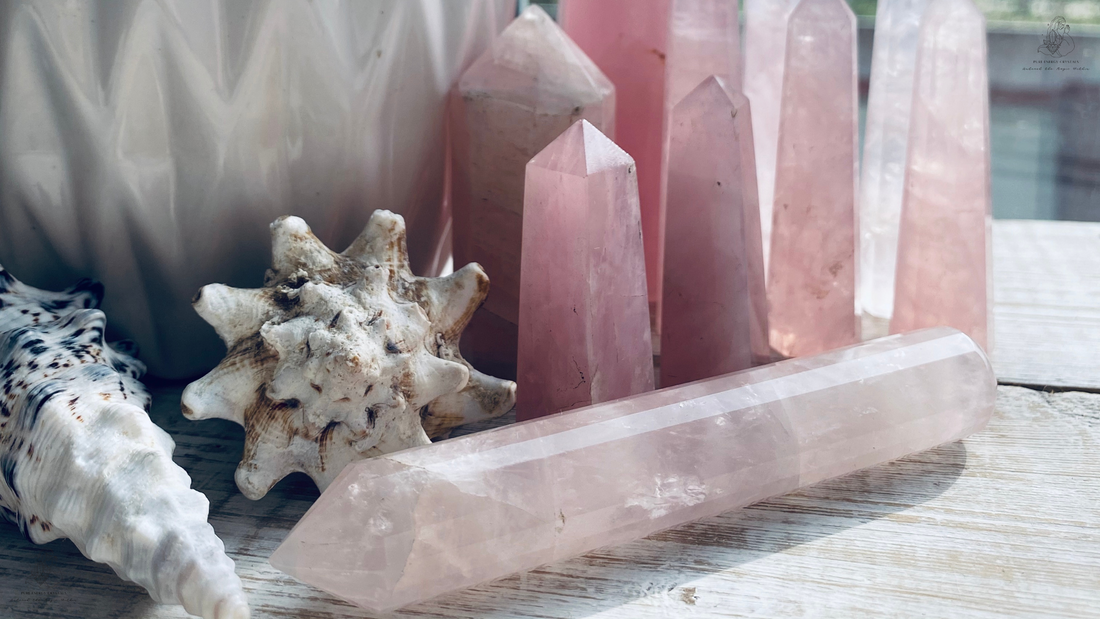
The Science Behind Quartz Crystals: Unlocking Nature’s Wonders
Share
Quartz crystals have fascinated scientists, mystics, and enthusiasts for centuries. Their mesmerizing beauty and unique properties have made them a subject of intense study and admiration. But what exactly makes quartz crystals so special? Let’s dive into the science behind these incredible minerals and explore why they hold such a prominent place in both natural and technological realms.
What is Quartz?
Quartz is one of the most abundant minerals on Earth, found in everything from granite to sand. It’s composed of silicon dioxide (SiO₂), which forms a crystalline structure. This structure is a repeating pattern of silicon and oxygen atoms arranged in a tetrahedral lattice. The result is a mineral with remarkable physical and chemical properties.
Crystal Structure and Types
Quartz crystals come in various forms, including:
⭐️ Clear Quartz: Often referred to as “rock crystal,” it is transparent and commonly used in electronics.
⭐️ Amethyst: A purple variety of quartz, valued for its beautiful color.
⭐️ Rose Quartz: Known for its soft pink hue, it is often associated with love and healing.
⭐️ Smoky Quartz: Ranges from brown to black, with a smoky or translucent appearance.
Each variety has its own unique properties, but they all share the same fundamental crystal structure.
The Science of Quartz
🤔 Piezoelectric Effect: One of the most fascinating aspects of quartz is its piezoelectric properties. When mechanical stress is applied to a quartz crystal, it generates an electrical charge. This effect is used in various electronic devices, such as quartz watches and oscillators, to maintain precise timekeeping and signal frequencies.
🤨 Optical Properties: Quartz crystals exhibit remarkable optical properties due to their ability to refract and polarize light. This makes them valuable in optical instruments, such as microscopes and telescopes. Clear quartz, in particular, is used as a lens material because of its clarity and resistance to scratching.
👀 Thermal Properties: Quartz has a high thermal stability, meaning it can withstand significant changes in temperature without altering its structure. This makes it useful in high-temperature applications, such as in the manufacturing of glass and ceramics.
😯 Chemical Inertness: Quartz is chemically inert, meaning it doesn’t react with most chemicals. This property makes it a durable material for various industrial processes and a popular choice for jewelry.
Quartz in Technology
The unique properties of quartz make it indispensable in modern technology:
✔️ Electronics: Quartz crystals are used in oscillators and filters to regulate frequencies in radios, computers, and smartphones.
✔️ Watchmaking: The precise timekeeping ability of quartz crystals revolutionized the watch industry, leading to the development of accurate quartz watches.
✔️ Optics: High-quality quartz is used in lenses and prisms for scientific instruments and cameras.
Quartz in Everyday Life
Beyond its technological applications, quartz also plays a role in our daily lives:
💍 Jewelry: The beauty and variety of quartz crystals make them a favorite choice for gemstones and decorative items.
🧘🏼♀️ Healing and Meditation: Many people believe in the metaphysical properties of quartz, using it in meditation and healing practices for its supposed energy-clearing and balancing effects.
Quartz crystals are more than just beautiful stones; they are a testament to the incredible complexity of nature. From their role in advanced technology to their presence in everyday objects, quartz continues to amaze and inspire. Whether you’re drawn to their scientific properties or their mystical allure, quartz crystals offer a fascinating glimpse into the wonders of the natural world.
Explore the diverse world of quartz and discover how these remarkable crystals can enrich your life. For more information on quartz crystals and other fascinating minerals, visit Pure Energy Crystals.